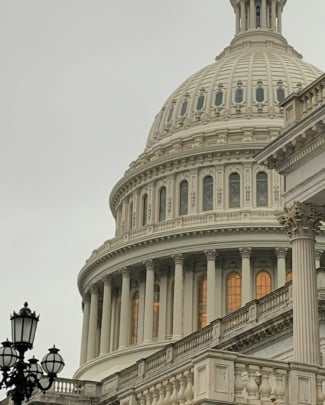AFFORDABLE HOUSING IN CHICAGO ADDS TO HISTORY OF SEGREGATION
“MODERATE” BIDEN TURNS PROGRESSIVE
EASTER TWEET FROM SEN. WARNOCK DELETED AFTER ACCUSATIONS OF HERESY
BIDEN TO FIGHT AS HARD AS POSSIBLE FOR INFRASTRUCTURE BILL & SENATE...
THE SCREWTAPE LETTERS PREDICTED THE WOKE MOB
AFFORDABLE HOUSING IN CHICAGO ADDS TO HISTORY OF SEGREGATION
Government-backed affordable housing in Chicago has largely been confined to majority-Black neighborhoods with high concentrations of poverty over the last two decades, a design that has perpetuated the city’s long history of segregation.
As the neighborhoods faced rising divestment, gun violence and food deserts, the lack of affordable housing in other parts of the city restricted many people of color from leaving. . . .
Chicago Housing Commissioner Marisa Novara said the city has tweaked its qualified allocation plan to encourage developers to submit proposals for new affordable housing in parts of the city that are higher-income and amenity rich and that have traditionally excluded lower-income people and people of color. She said the city is prepared to pay more to acquire land in such areas.
In addition to this, the city has also put forth multiple other goals in the qualified allocation plan to address racial equity within housing which include: “increasing access to opportunities for small and newer developers of color to benefit from the low income tax credit program, prioritizing investments in data infrastructure and reporting so that it can prioritize tax credit developments serving residents that are most in need, ensuring that residents with disabilities and diverse language needs are able to find and live in units that accommodate their needs, and working on access to affordable housing opportunities by ensuring that marginalized residents are not unfairly screened out of the process due to arrest and conviction records, evictions, or low credit scores,” among others, the plan stated.
The plan also aims to “improve outcomes and wealth building opportunities for residents by incentivizing applications that offer or provide access to programs like homeownership support and workforce development programs.” . . .
While such assessments aren’t new, Chicago says it’s the first time a city has actively taken stock of its own racial equity when it comes to federal dollars from the Low-Income Housing Tax Credit program, the largest source of funding for new affordable housing in the U.S.
The assessment revealed that the city’s low-income tax program has developed or preserved about 10,000 low-income units since 2000, with 60 percent of the funding going to high-poverty areas. . . .
The majority of Chicago’s low-income developments have been new construction in high-poverty, majority-Black areas, with a quarter in higher-income “opportunity” areas, even though only 35 percent of city tracts have majority-Black populations.
Fewer than 20 percent of units were in majority-white neighborhoods, even though 30 percent of Chicago’s tracts are majority white. Only 6 percent of units were developed in majority-Latino areas, even though over 20 percent of all Chicago census tracts have majority-Latino populations, the assessment stated. . . .
The city said it will use the sobering data to restructure the Low-Income Housing Tax Credit program to reflect racial segregation by pushing development in highly resourced, amenity-rich areas, giving residents more choices and mobility.
The city, which is allocating $61 million for 2022 and 2023 low-income tax credit developments, has opened a public comment period on the developer application until April 15.
The Low-Income Housing Tax Credit program, which was created in 1986, accounts for about 90 percent of all affordable rental housing in the country. The program is run by the Treasury Department, which provides tax incentives to encourage developers to create affordable housing. . . .
The low-income tax credit program is different from Section 8 or public housing. Generally, “tax credit units are set aside for households with incomes at or below 60 percent of the local median income with rents no higher than 30 percent of that maximum income level, and owners must meet these affordability requirements for at least 15 years,” according to the Center on Budget and Policy Priorities, a progressive research organization.
To qualify in Chicago, which adjusts for family size, a family of three would need to earn $49,140 or less to meet that mark.
However, the allocation plan has two other options to adjust the median income requirement, one of which would be affordable for households earning up to 50 percent of an area’s median income. . . .
Share your prayers about this housing system in the comments below!
(Excerpt from NBC News. Article by Safia Samee Ali. Photo Credit: .)
Partner with Us
Intercessors for America is the trusted resource for millions of people across the United States committed to praying for our nation. If you have benefited from IFA's resources and community, please consider joining us as a monthly support partner. As a 501(c)3 organization, it's through your support that all this possible.


We use cookies to ensure that we give you the best experience on our website. If you continue to use this site we will assume that you are happy with it. Privacy Policy





Comments
No comments have been posted yet; you can be the first!